Want to get better results from your social media ads? Wondering how to convert more people in the consideration stage of the customer journey?
In this article, you’ll discover how to improve your social media advertising campaign results by introducing social proof.

What Is Social Proof and Why Should You Use It in Ads?
Social proof is content that showcases something great about your brand, products, or services but not from an internal perspective. Instead, social proof comes from external sources like customers, influencers, press outlets, or industry associations.
In fact, the source of social proof is one of the reasons it’s so effective. Even when you use social proof in paid content, it doesn’t sound like an advertisement. Instead, social proof reads like an objective fact or as a trusted third party’s opinion, because it is.
#1: 6 Types of Social Proof to Feature in Ads
The best type of social proof to use depends on your organization’s industry and target audience. Let’s walk through some of the most common options.
Customer or Sales Numbers as Social Proof
One of the most compelling aspects of social proof is its ability to create a fear of missing out (FOMO). Numbers are particularly good at creating FOMO because they easily convey the number of people who have already purchased a product or service.
For example, the @filestage Instagram ad below states, “thousands of companies have switched to Filestage,” before listing several benefits of the platform. For B2B decision makers, going with a solution that’s already attracted thousands of users would be an obvious choice.

Expert Endorsements as Social Proof
Getting an endorsement from a respected industry figure is a huge win and it can make a great social proof ad. In paid content, expert or celebrity endorsements usually work best when they’re short and sweet. A brief quote from the endorser or a simple statement confirming that the celebrity uses your product or service is a good place to start.
To get maximum value from this celebrity social proof, make sure the endorser is a good fit for your target audience. For example, an industry expert may have more of an impact on ideal customers than a major celebrity would.
Reviews and Testimonials as Social Proof
Endorsements from experts and celebrities can certainly make a product or solution appear more legitimate. But sometimes the most convincing quotes come from customers just like the people who see your ads.
Customer reviews often highlight challenges and goals your target audience has while using language that resonates with your ideal customer. Because they’re so relatable, video testimonials can be even more effective. According to Boast, two-thirds of people are more likely to buy a product or service after watching a testimonial.
Case Studies and Customer Stories as Social Proof
Ideal for building credibility, case studies and customer stories walk your target audience through the process of solving a common issue. They typically focus on problems your target audience has and share the kind of results that your ideal customer wants to achieve.
Although case studies and customer stories typically come from in-house teams, they allow customers to speak for themselves, which can resonate with other potential customers. For example, the @Leadpages Facebook ad below features a short customer story from a user whose challenges and goals match the landing page builder’s target audience.

Influencer or User-Generated Content as Social Proof
Influencer content and user-generated content (UGC) can also show your target audience how other customers use your products or why they like your services. But unlike customer stories, influencer content and UGC come straight from the source: creators.
Get World-Class Marketing Training — All Year Long!
Are you facing doubt, uncertainty, or overwhelm? The Social Media Marketing Society can help.
Each month, you’ll receive training from trusted marketing experts, covering everything from AI to organic social marketing. When you join, you’ll also get immediate access to:
- A library of 100+ marketing trainings
- A community of like-minded marketers
- Monthly online community meetups
- Relevant news and trends updates
Because influencer marketing content and UGC usually have a lower production value than branded content, they have the added benefit of appearing more authentic and relatable. If you plan to use other creators’ content in your paid promotions, it’s essential to get permission. We’ll cover the process later in this article.
Awards and Certifications as Social Proof
Awards, accolades, and certifications from third-party organizations can also make your brand, product, or service appear more credible. This type of social proof tends to be even more effective when it comes from a highly respected press outlet or industry association.
For example, the Calendly LinkedIn ad below features an award from G2, a leading software review site. By highlighting a well-known outlet and showcasing the scheduling tool’s top rank in its category, the ad successfully boosts the brand’s credibility, likely prompting decision makers to seriously consider a subscription.
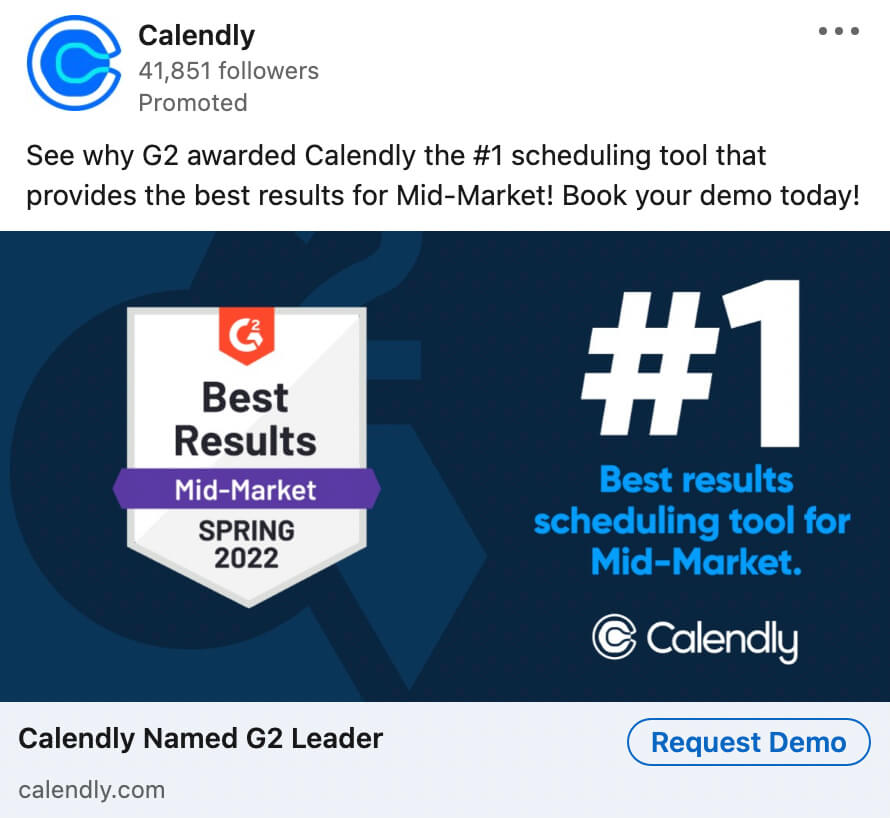
#2: Where to Find Social Proof for Ad Campaigns
You can find tons of social proof in the marketing and sales tools you use every day. Let’s look at a few of the best sources for social proof to use in your online advertising campaigns.
Sales and Customer Relationship Management (CRM) Tools
When you want to share customer numbers, the best place to look is your organization’s own internal tools. Make a note to update your ad copy to reflect accurate numbers whenever you reach a new customer acquisition threshold.
Review Plugins
If your website collects customer reviews from site visitors, you won’t need to look far for great customer quotes. Be sure to get permission from customers before using their words or images in paid content.
Social Media Profiles
When you’re seeking UGC, your profiles on each social media platform are a great place to start. First, check your brand’s mentions and tags on each social media channel. While platforms like Twitter and LinkedIn consolidate mentions and tags in a single notifications feed, Instagram and Facebook require a little more digging.
In the Instagram app, check the rightmost tab to find content in which customers and influencers have tagged your brand. In Business Suite, go to the Content menu and select the Mentions & Tags tab to see all of the posts that mention your brand. Make sure to confirm permission before using UGC in your ads.

Brand Collabs Manager and Creator Marketplace Tools
If you’ve partnered with influencers to promote your brand, some social channels host creator content in dedicated tools. For example, you can find all of your influencer-created content for Facebook and Instagram in Meta Brand Collabs Manager, which you can access via Creator Studio or Business Suite.
If you’ve partnered with influencers through TikTok, you can find their sponsored content in the Creator Marketplace. Note that you’ll need to take an extra step to use creator content in a paid campaign. We’ll cover workflows for TikTok and Meta below.
#3: Tips for Using Social Proof in Advertising Campaigns
Processes and best practices for using social proof differ from channel to channel. Let’s look at tips for incorporating social proof in ads across the major social media networks.
How to Use Social Proof in Facebook Ads
Compared to other social channels, Facebook has one of the most generous character limits for ad copy. That means you have plenty of space to share social proof like customer reviews or sales numbers in the description.
For example, the @gelatoconnects Facebook ad below highlights a list of reasons customers like the on-demand production platform. At the end of the list, the copy states, “10 million+ orders and counting” to create a sense of FOMO among creative business owners.
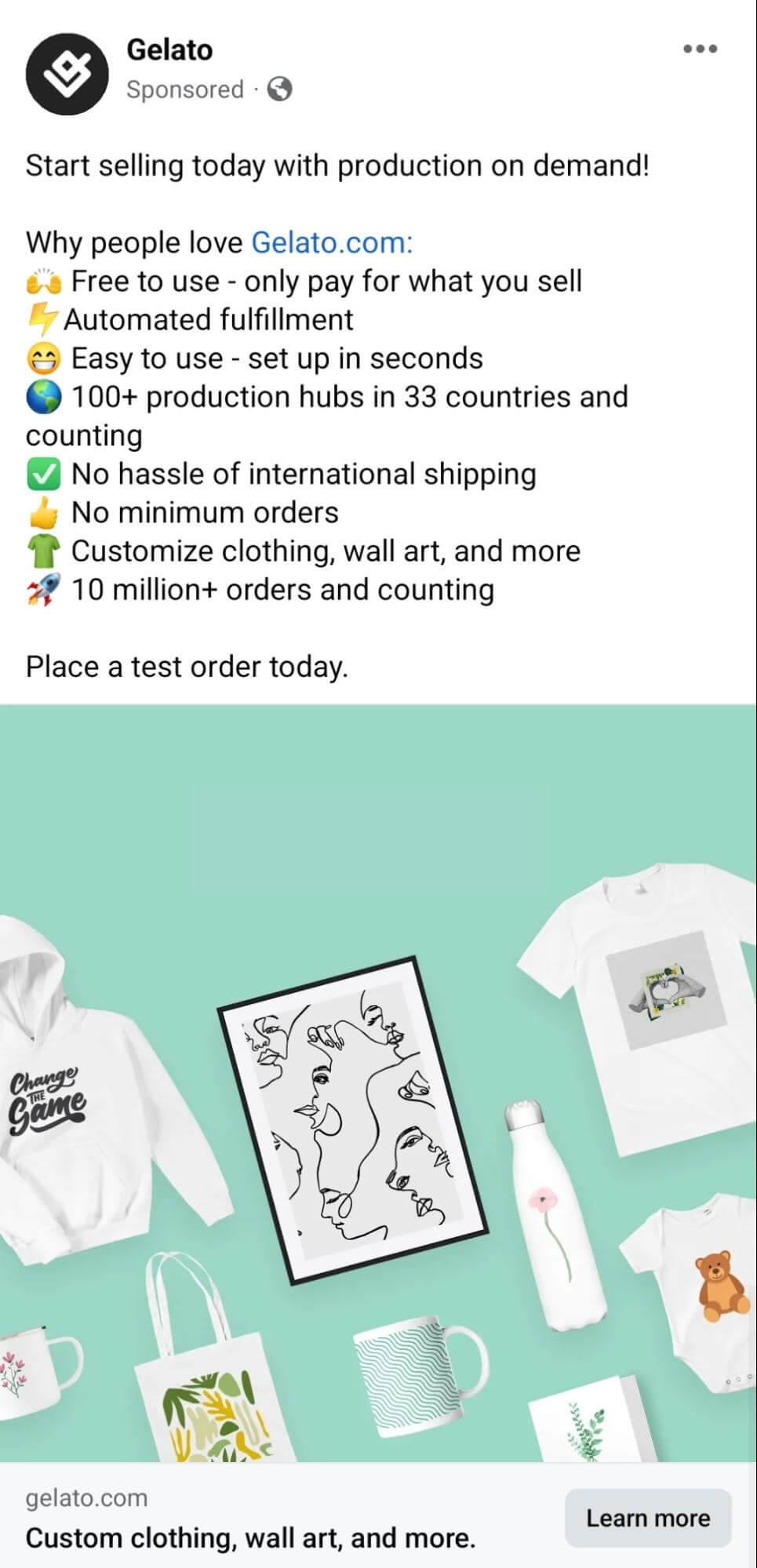
Facebook also makes it relatively easy to incorporate influencer content into your ads, as long as you have the requisite permissions. When influencers create sponsored Facebook content for your business, they’re required to add a paid partnership label to their post.

Discover Proven Marketing Strategies and Tips
Want to go even deeper with your marketing? Check out the Social Media Marketing Podcast! Publishing weekly since 2012, the Social Media Marketing Podcast helps you navigate the constantly changing marketing jungle, with expert interviews from marketing pros.
But don’t let the name fool you. This show is about a lot more than just social media marketing. With over 600 episodes and millions of downloads each year, this show has been a trusted source for marketers for well over a decade.
Influencers can add the tag automatically by using the Tag Sponsor option in Creator Studio or on their Facebook page. Then when you go to create a Facebook ad in Meta Ads Manager, you can browse all of the content you’ve sponsored.
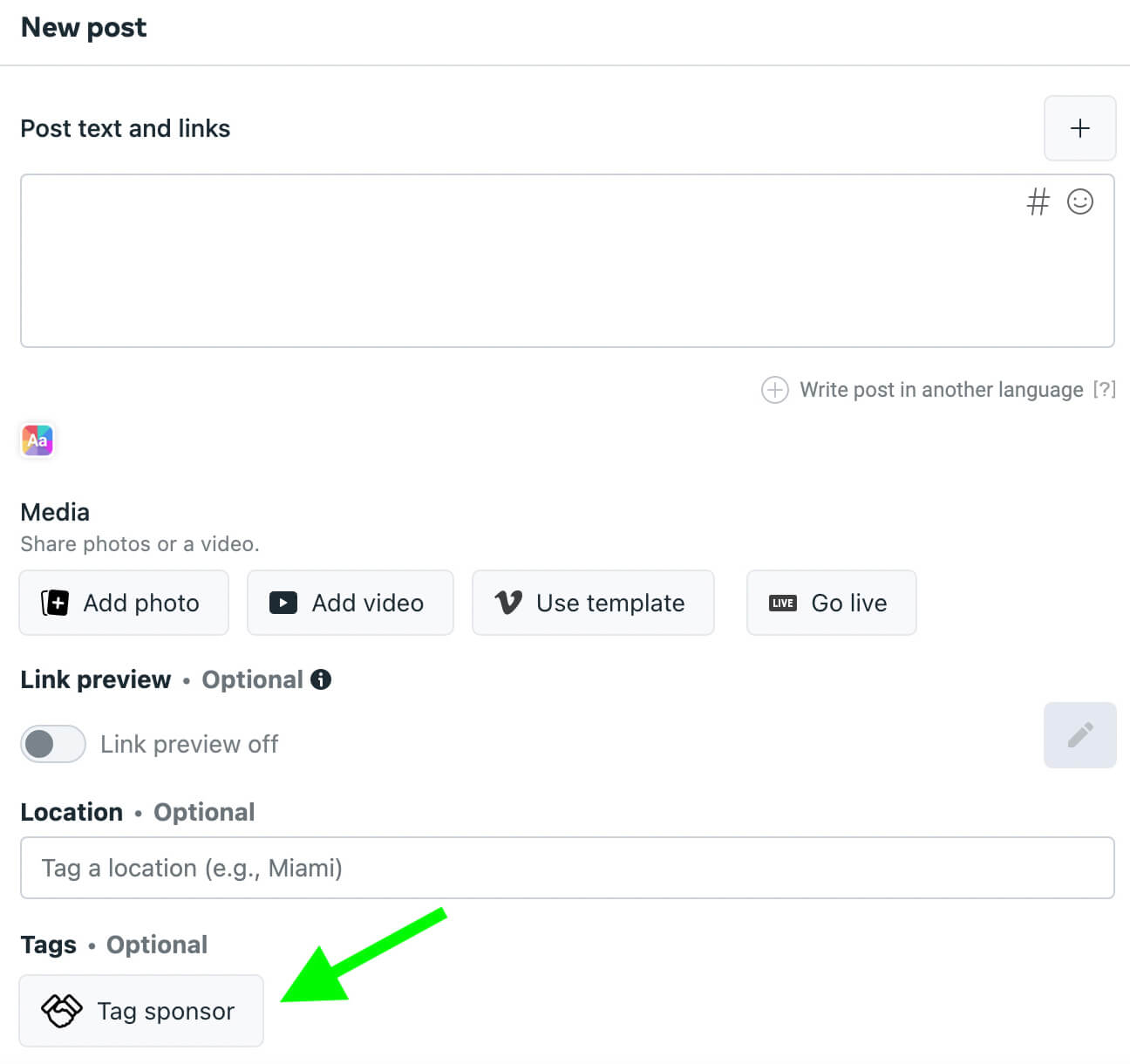
At the ad level, choose the option to Use Existing Post for your creative. Go to the Branded Content tab and browse all of the influencer content that features your brand. Select the influencer post you want to use, and publish your campaign. The influencer will receive a notification, and once they approve the usage, your ad can run.

How to Use Social Proof in Instagram Ads
If you want to add influencer content to an Instagram ad, follow the same workflow as above. Set up your campaign in Ads Manager and select Instagram-only placements. Then at the ad level, browse all of the available branded content for your ad.
In some cases, you can speed up the approval process for your social proof ads on Instagram. That’s because Instagram has its own branded content tool that allows creators to grant permission for sponsors to use their content in paid promotions.
When creators post your sponsored content on Instagram, they’re required to flip on the Add Paid Partnership Label switch on their Instagram post. When they add your Instagram account as the brand partner, they also have the option to Allow Brand Partner to Boost.

If they turn on this switch, you’ll automatically have permission to boost the post. That means you can tap to promote it right from the Instagram app. If you opt for a boost rather than a campaign, your objectives and targeting options will be more limited but it’s still an efficient way to use social proof in Instagram ads.
Instagram is also ideal for showcasing many other types of social proof. For example, the @shopifyplus Instagram ad below shares social proof—“thousands of enterprise brands choose to partner with us”—in the video ad’s embedded captions.

How to Use Social Proof in LinkedIn Ads
Because of the social network’s B2B focus, LinkedIn ads tend to work better with sales numbers, customer stories, and industry awards. For example, the Trello LinkedIn ad copy below promotes the brand’s massive user base: “over 2,000,000 teams.” The image carousel adds extra social proof—“80% of the Fortune 500 trust Trello”—ensuring that users see impressive numbers no matter where they look.
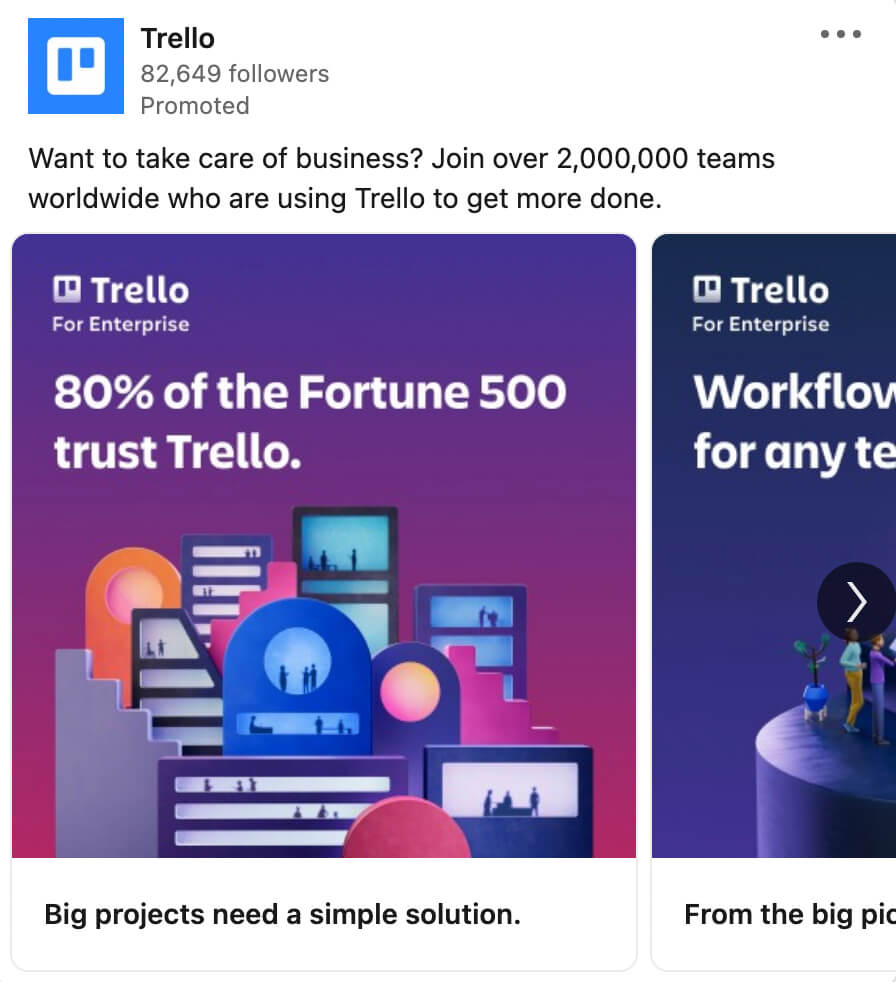
In addition to developing creatives specifically for LinkedIn ads, you also have the option to promote organic content. This approach is helpful if you aren’t sure what kind of social proof will resonate with your target audience.
You can test different types of social proof in organic posts. Then when you find one that generates a lot of engagement, you can use the post in an ad. In Campaign Manager, select Browse Existing Content at the ad level and choose the social proof you want to promote.
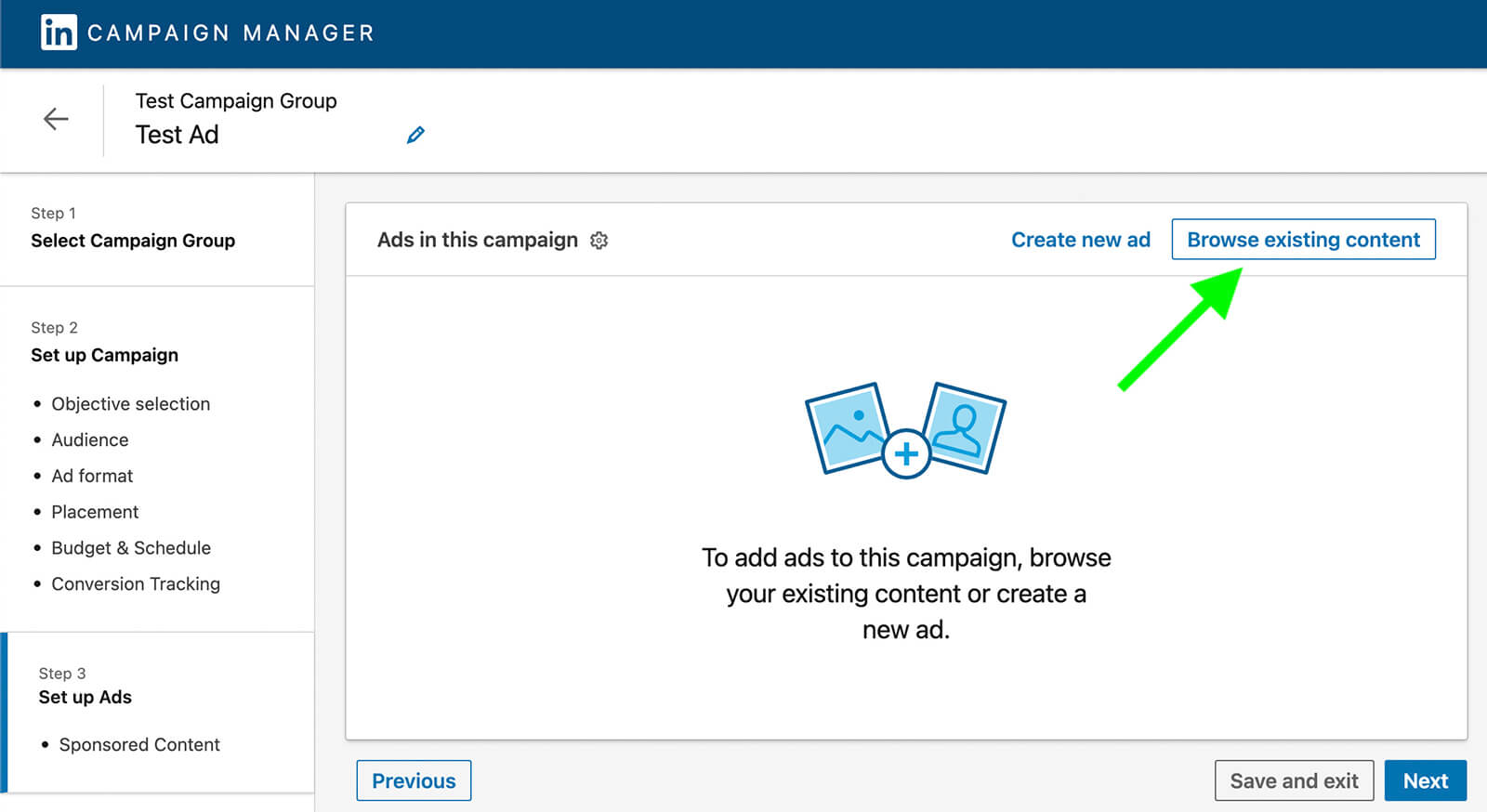
How to Use Social Proof in Twitter Ads
You can use a similar workflow to share social proof in Twitter ads. Create organic tweets and track which ones generate the most retweets and replies. Then promote the tweets that already have the most traction. In Twitter Ads Manager, you can click the Use Existing Ad link at the ad level to select from existing content.

Using Ads Manager, you can also create custom paid content that showcases your most compelling social proof. For example, the @Integrateio Twitter ad below highlights an award from software review site G2. The ad uses a carousel to compel users to swipe through and engage with the content.

How to Use Social Proof in TikTok Ads
If your audience tends to respond well to UGC and influencer content, advertising on TikTok may be a smart move. The platform makes it incredibly easy for advertisers to request permission to use UGC and influencer content, no matter who created it.
First, find content you want to repurpose by checking your mentions and Creator Marketplace campaigns. Reach out to the creator to ask for permission to use the video in your ad campaign. If they agree, they can go to the Ad Settings for their video and turn on Ad Authorization. Then they can click the Generate button and share the video code with you.
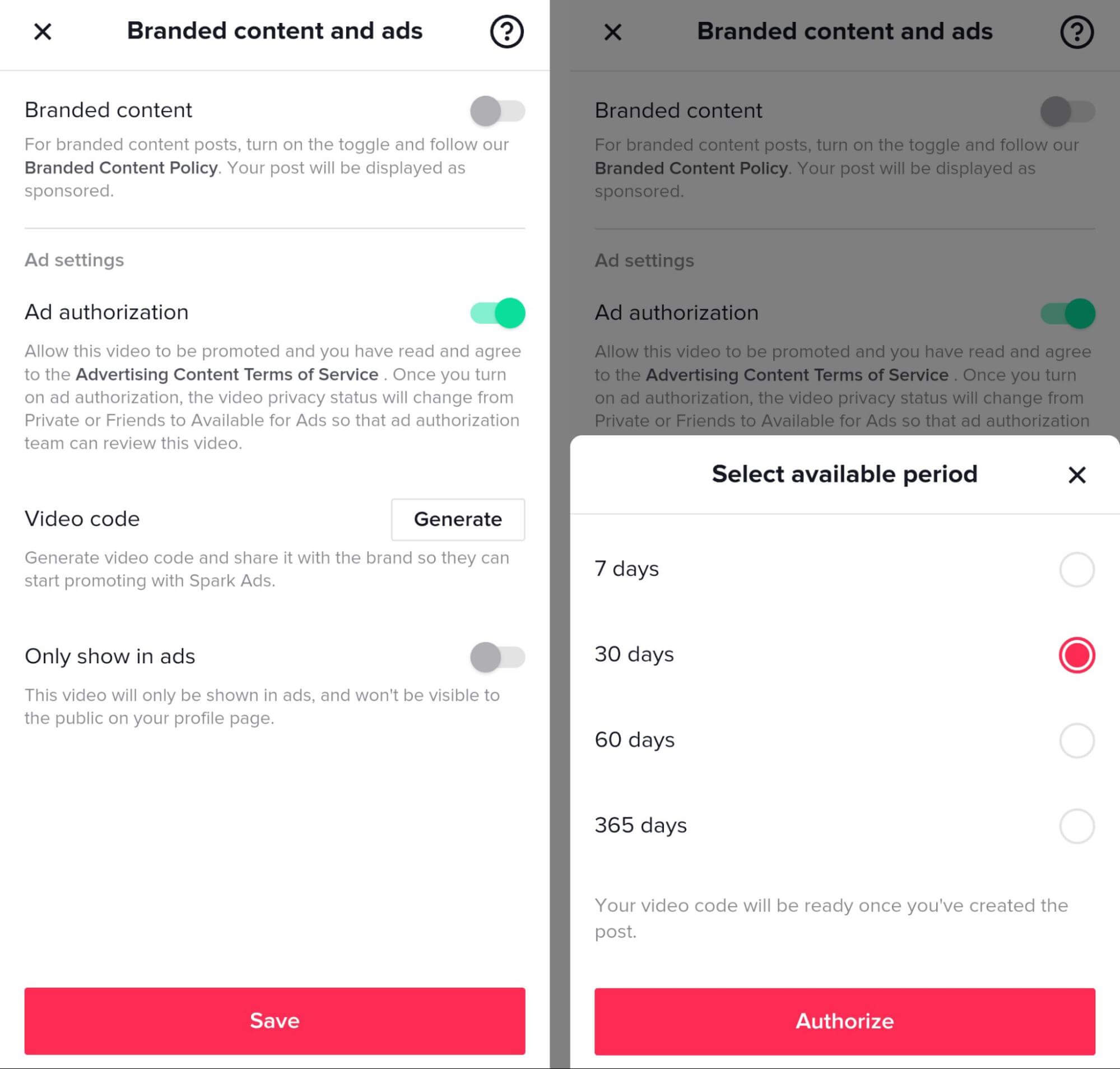
In TikTok Ads Manager, you can set up a new campaign. At the ad level, turn on the Use TikTok Account to Deliver Spark Ads switch and select Use Other Authorized Account or Post. Click the Authorize TikTok Post link and enter the code the creator gave you to apply for authorization to use the creator’s content in your ad.

How to Use Social Proof in YouTube Ads
In YouTube ads, numbers, endorsements, and awards can all help boost your brand’s credibility. Be sure to showcase these elements visually to give your target audience multiple opportunities to absorb and process the information.
If you want to use other types of social proof like customer stories, UGC, or influencer content in your YouTube ads, you certainly can. But unlike many other social channels, YouTube doesn’t have a built-in creator approval process.
If you plan to advertise with customer stories that you created in-house, make sure you have permission from the customers you feature. If you intend to use content from another creator, it’s a good idea to fill out the Google Ads Copyright Documentation Web Form. This form confirms that you have permission from the copyright holder and can prevent your Google Ads account from getting flagged.

Conclusion
Social proof can add credibility and authenticity to paid campaigns, which can give your digital marketing a much-needed boost. Use the workflows above to start searching for the most effective social proof and incorporate it into your paid social media marketing campaigns.
Stay Up-to-Date: Get New Marketing Articles Delivered to You!
Don't miss out on upcoming social media marketing insights and strategies! Sign up to receive notifications when we publish new articles on Social Media Examiner. Our expertly crafted content will help you stay ahead of the curve and drive results for your business. Click the link below to sign up now and receive our annual report!
Attention Agency Owners, Brand Marketers, and Consultants

Introducing the Marketing Agency Show–our newest podcast designed to explore the struggles of agency marketers.
Join show host and agency owner, Brooke Sellas, as she interviews agency marketers and digs deep into their biggest challenges. Explore topics like navigating rough economic times, leveraging AI, service diversification, client acquisition, and much more.
Just pull up your favorite podcast app, search for Marketing Agency Show and start listening. Or click the button below for more information.

